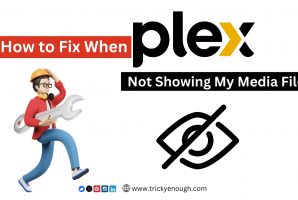Businesses are anything from mom-and-pop shops to large corporations like Target, Google, or eBay, and they’re designed to provide a good or service to the public. Storytelling is a tradition that has been around since the dawn of time, and as humans have evolved, so has the art of business storytelling.
When you sandwich them together, though, it’s an interesting combination. Also, when you try to do it in the digital age, it creates memorable content that attracts customers to your brand.
Business storytelling on social media isn’t a new concept, but when done well, it’s interesting. Instead of people thinking of suits and stock markets when they think of a business, they’ll be able to relate to the faces behind a company.
What is Business Storytelling?
Business storytelling is the practice of sharing a company’s narrative with the rest of the world. Before becoming a successful business operating out of one or more properties, they start from much humbler roots.
Apple, for example, was started in a garage. Since its founding in 1976, in addition to a headquarters, there are more than 500 retail stores, countless products, over 130,000 employees, and a net revenue of more than 50 billion USD in 2018.
The purpose of this kind of storytelling is to help humanize a brand and connect to your audience in a way that isn’t dependent on you bombarding people with ads, or trying to sell them a product. Instead, talk about things like how are you changing the market, and how did you go from an idea to a brick-and-mortar store?
As much as we enjoy hearing stories of success, we also like to hear about the lack of funding, the constant borrowing at the beginning, environmental hazards, and furry critters making their way into your workspace. These sorts of things are relatable to the average Joe.
Most people aren’t business moguls, but they have had an odd encounter with Mother Nature at home. This sort of content is relatable, and if you share it on your social media channels, you can engage customers in a way that makes them loyal to you.
The Five Steps to Effectively Tell Your Brand’s Story
When it comes to explaining your brand and doing it online, there are five things you have to do.
• Have defined metrics.
• Show your brand’s best self.
• Leave the audience wanting more.
• Be consistent across all channels.
• Involve the public.
Through following the five previously mentioned points, and practicing your craft, you’ll be able to effectively tell your story on not only your website but also a variety of platforms.
Defined Metrics
Keeping your content focused on one or several areas is important to keep the attention of your audience. If you’re a restaurant owner, it doesn’t make much sense to share content related to deep-sea diving.
There are several things you can do to make content that works.
• Have a clear narrative.
• Say what happened and the setting.
• Who was involved?
• What were you trying to do?
• What challenges were overcome?
A Quick Example of Some of These Principles in Action
When Joe Smith’s Pizzeria was first opened, there were issues with the wood-burning stoves that were being used. The kitchen staff was burning the pizzas, and the opening was a nightmare. However, over time, the kitchen figured everything out, and the pies now come out perfect every time.
The crust is hard on the outside and soft on the inside, and the cheese is slightly browned on top but still gooey. Come on over to Joe Smith’s Pizzeria and grab a slice today, at our location at 123 Main Street in Anytown, USA.
Highlighting What Went Well With This Post
Joe Smith’s Pizzeria highlighted several of the things that people like to see. We know that this pizzeria makes pizza, and it’s a short story that flows logically. It also tells people of an issue, who was affected and how the issue was remedied.
Something that we liked is that the second paragraph of what will eventually be a post on social media used a variety of adjectives to give the reader a better picture of the pizza. They also gave the location of their restaurant, so you can go and check them out.
Showing Your Best Self
When it comes to posting about your businesses online, it’s important to tell stories that are relatable to everyday people. The story from the pizzeria is a great example of this because we’ve all burnt something in the kitchen.
The post doesn’t have to belong or be complicated, our example was less than 100 words, but when having story time on your Instagram feed, for example, you want to be concise with your words. This is done not to make people feel trapped in your post, sort of speak.
While showing your best self, it’s also important to talk about previous failures. People learn by making mistakes, and if you only highlight the good and never the mistakes that lead to the lessons, you’ll seem less human.
Another thing Joe’s Pizza can do is highlight not only the product but also the ingredients. If he locally sourced some of his ingredients, he could do a social media spotlight on some of his suppliers. Not only does this create an online sense of community, but people are more attracted to places that are farm-to-table because the products are fresher and better for you.
Leave Your Followers Something to Think About
Think of this as the “it” factor of your post, that helps set apart your company from others. This could be the lessons you learned along the way and why they’re important or applicable to situations outside of the business world.
If you’ve had a lot of highs and lows while building and maintaining your brand, consider doing a Spotlight Sunday series. In this campaign, you would share a short story and what you learned from it.
We are going to share two of our favourite life lessons that we learned the hard way. Rather than share the long version, we went for how it would be written on a throw pillow you would see in a Target. Every day may not be good, but there’s something good in every day. The other quote is you can’t control how other people act, but you can control how you react.
After reading the first quote, most people go, “Huh, I did have a bad day, but x happened, and that was great.” The second quote has a lot of practical wisdom attached to it. If two people are having a disagreement, and one person is yelling, and the other person is calm, then the calm person can work to de-escalate the situation.
Be Consistent Across All Your Social Media Platforms
When building your brand, it’s important to think about how your social media profiles will look across different accounts. You don’t want your accounts to look disjointed, and if we learned anything from the Tidying Up with Marie Kondo show, it’s that when things are organized, they spark joy.
Your brand should use the same colour scheme, and similar profile pictures, and have posts and stories that relate to your interests on the Insta, Facebook, Twitter, and any other social media feeds that are used.
It’s important to note that you may not be an expert at this at first, and that’s okay. With time and practice, you’ll learn how to tell your story consistently across multiple channels in a variety of ways to keep it fresh.
Emotional and linguistic consistency is also imperative. Customers like to have their expectations fulfilled and want their content to be consistent in quality, language, and attitude. There are now many online tools and services like Grammarly, ClassyEssay or TopEssayWriting that can help you maintain your tone and voice throughout all of your content, whether it’s for social media or blogs.
Involve Your Audience
One of the benefits of using social media is you get to take advantage of the wide reach of the internet. Why not take it one step further and build a sense of community while building your brand?
You can talk about things that affect not only your company but also how it affected you personally. If you collaborate with other people and groups, mention them. We briefly touched on this earlier with Joe’s Pizzeria and the social media spotlights.
You can also go to community events, set up a booth, provide some food, and snap some pictures. Another idea is if you’re a car dealership, whenever you sell a car, why not snap a picture of the salesperson, the family, and the vehicle?
You can also say who everyone is and a couple of features about the car. This makes for great content on your feed, and it helps differentiate you from other dealerships in your area because you are adding faces to your story!
Finally, the stories don’t have to always be about you or the brand, talk up collaborations with other people and businesses. Say how they’re changing the game, and highlight the lessons learned from not only that collaboration but about life in general.
Like this:
Like Loading...













 PitchGround Review: The SaaS Marketplace for Small Businesses
PitchGround Review: The SaaS Marketplace for Small Businesses
Hi Kristin,
In 2020 social media marketing plays a great role to promote a business. And it’s true that storytelling is a great way to get people’s attention easily.